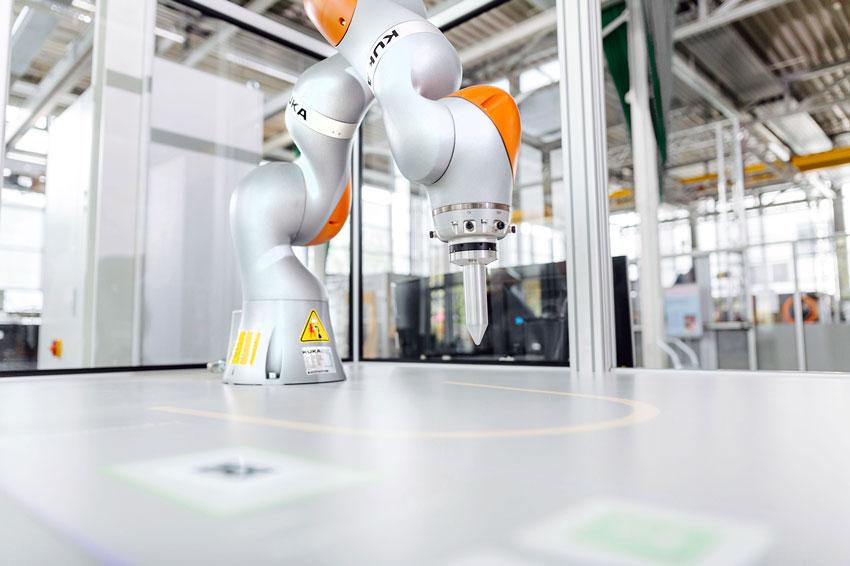Web-based design tool for better job safety
Safe human-robot collaboration
Humans and robots are sharing workspace in more and more sectors, whether they be manufacturing, logistics or medicine. Safety plays a major role in this. Up to now, range-finders on robots have prevented severe impacts or crushing when collisions occur but these sensors do not function when humans and machines have to stand close to each other, e.g. in subassembly. This requires other solutions. Teams of Fraunhofer IFF research scientists have developed a web-based application, the Cobot Designer, which ascertains the robot speeds that ensure safe collaboration. The design tool helps programmers design cobots safely. The project was contracted by the German Social Accident Insurance Institution for the Woodworking and Metalworking Industries (BGHM).
Anyone acquiring cobots for their business must perform a legally required risk assess-ment. Companies must identify specific potential hazards and foreseeable misuse by employees beforehand. The maximum speed a robot is permitted to reach is measured when it is certified for safety. A special device measures impact forces and pressures that act on anyone who comes into contact with the robot. The limits from the standard ISO/TS 15066 may not be exceeded. Otherwise, the robot’s speed would have to be reduced to prevent injuries to employees caused by clamping or impact. Such measurement is costly and requires expertise. The robot must be programmed and built. “Small businesses in particular can’t afford this. What’s more, measurements are taken too late since the robot has already been purchased. Our Cobot Designer for digital hazard prevention comes into play here,” says Dr Roland Behrens, research scientist at the Fraunhofer IFF.
Companies can use the interactive tool before a making a purchase to assess whether the robot’s speed suffices to perform a particular job productively and, above all, safely. “The amount of force is contingent on the robot’s speed,” says Behrens. If limits are exceeded, productivity subsequently suffers. “Let us assume the robot has to presort a pallet in one minute. If the speed has to be reduced by fifty percent for safety reasons, the cycle time increases to two minutes, reducing the robot’s economic efficiency fifty percent,” explains the research scientist, adding, “That’s why being able to perform an economic feasibility analysis before purchasing a robot would be desirable.”
Read the article describing the issue in detail in the August / September e-issue of PhotonicsViews, featured in the special compilation “Digital Tools, Design Software, Simulations”: Production Safety
Contact
Fraunhofer Institute for Factory Operation and Automation IFF
Sandtorstrasse 22
39106 Magdeburg
Germany
+49 391 4090-0







